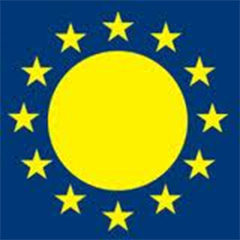The joint annual meeting of the European Technology and Innovation Platform (ETIP) on Photovoltaics and the ETIP on Smartgrids was hailed by Jeroen Schuppers, deputy Head of Unit for Advanced Energy Production in DG Research and Innovation of the European Commission as “very timely and relevant […] The event brings together two groups. Collaboration and cooperation is the main objective of the Energy Union.”
110 attended day 1 of the conference, which was held under the banner ‘Photovoltaics: centre-stage in the power system’.
Fairness in allocating the costs for ensuring system adequacy was a sensitive discussion point. There has been a steep rise in the number of PV systems serving particular buildings. These buildings may still need to take electricity from the grid from time to time (night, cloudy days etc). How should this service be remunerated, now that the building’s overall demand for grid electricity is less?
Dr Venizelos Efthymiou, co-organiser of the conference, said, “Capacity payments [fees that change little or not at all with respect to overall electricity consumption] are a way of reflecting the cost implications of utilising the integrated grid.” But Solar Power Europe CEO Dr James Watson said, “There should be no move at this point in having grid tariffs put on self-consumed solar electricity […] Let’s not create any more barriers for this energy transition especially when we’re doing so well and becoming daily more and more competitive.” He said Solar Power Europe “could support the energy-only market, reformed to have 15-minute gate-closure times and increased intra-day trading” as the primary way of ensuring system adequacy. Furthermore, according to Watson, payments that help to keep existing technologies in the market should be removed (“we need a very orderly ‘retreat-from-coal’ plan”), while incentives and / or tariff restructuring to harness demand-response and storage should be created.
As to the relative positioning of demand response and electricity storage, Marion Perrin (head of storage and electrical systems at CEA-INES) said, “Storage is the last flexibility option. There are plenty other solutions to integrate PV before needing to use a battery.” Advances in forecasting tools and system intelligence, including in features that may be incorporated into inverters, were highlighted as developments that will make PV systems responsive to system needs.
Dr Pierre-Jean Alet, leader of ETIP PV’s Grid Integration working group, was struck by the correlation between greater penetrations of PV and wind, and decreasing grid outages in Germany and Italy: “Distributed renewable generation is triggering a rethink of how the grid operates, leading to better service quality for all.”
Several research projects (or initiatives) (all of them EU-funded) were picked out by presenters as having made a useful contribution to the challenge of integrating PV into the grid: EEBUS, the Horizon 2020 projects Migrate and Flexiciency and the FP7 project Sustainable.
The ETIP PV is a continuation of the European PV Technology Platform (EU PVTP) and the Solar European Industry Initiative (SEII) in a single platform under the new SET Plan governance. The ETIP PV’s mission is in line with the Energy Union and the SET Plan priorities with focus on “Renewable technologies at the heart of the new energy system” and Europe to become “number 1 in renewables”. ETIP PV gathers all the relevant stakeholders of the PV sector, with arrangements for cooperative discussions with member states (MS), associated countries (AC), and the Commission services. Its main role is to provide consensus-based strategic advice on all issues relevant to progressing research and innovation (R&I) efforts.
For further information
www.etip-pv.eu


























